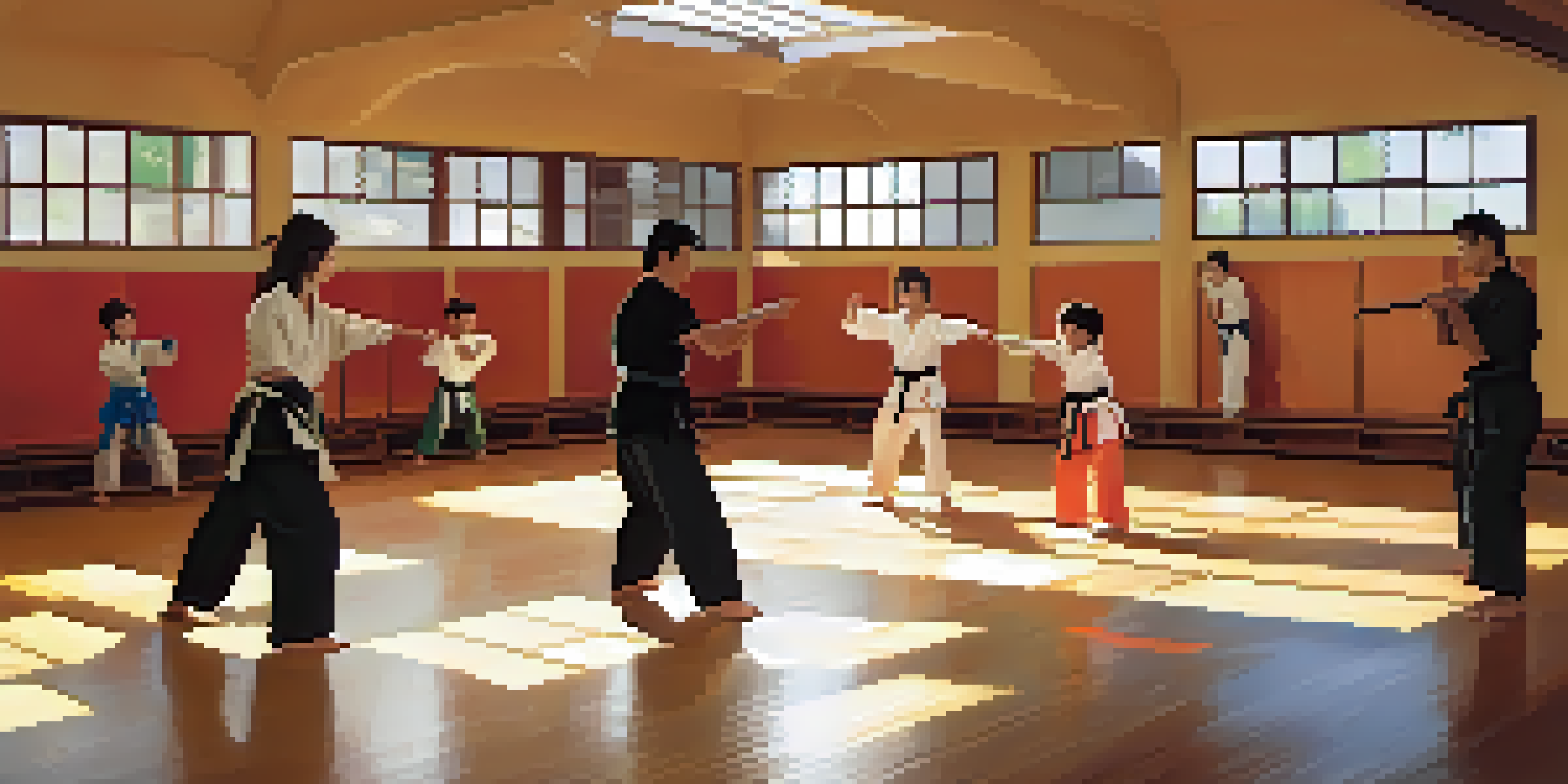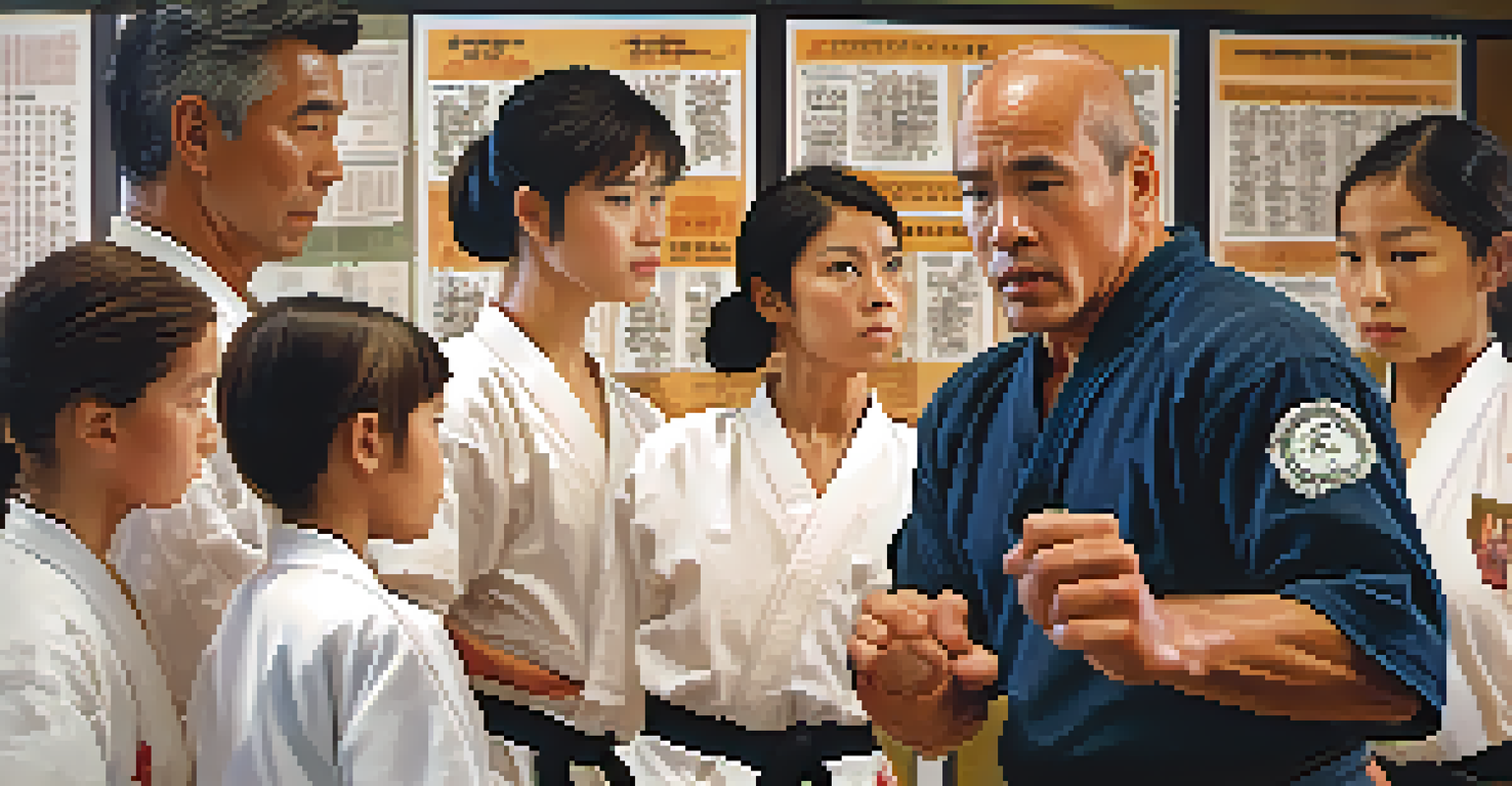How to Choose Self Defense Training for Your Family

Understanding the Importance of Self Defense Training
Self-defense training is crucial for families looking to enhance their safety. It empowers individuals with the skills to protect themselves in dangerous situations. Beyond physical skills, it fosters confidence and awareness, which are essential in avoiding potential threats.
The best defense is a good offense.
When everyone in the family is trained, they can support each other during a crisis. This collective knowledge not only improves safety but also strengthens family bonds. It’s about creating a secure environment where everyone feels capable and prepared.
Moreover, self-defense training can teach valuable life lessons. It promotes discipline, respect for others, and the importance of personal safety. These lessons extend beyond physical skills, enriching your family's overall well-being.
Assessing Your Family's Needs and Goals
Before diving into training options, take a moment to assess your family's specific needs. Consider factors like age, physical ability, and any previous experience with self-defense. Understanding these aspects will help you choose a program that is both safe and effective for everyone involved.

Think about what you hope to achieve through self-defense training. Are you looking for basic awareness skills, or do you want to focus on advanced techniques? Setting clear goals will guide your decision-making and ensure that you find a training program that aligns with your family's aspirations.
Self-Defense Boosts Family Safety
Training in self-defense empowers families with crucial skills and fosters a sense of security and confidence.
Don’t forget to consider the dynamics of your family. If you have younger children, programs that focus on age-appropriate techniques will be crucial. Conversely, if your family includes teenagers or adults, you may want to explore more comprehensive training options.
Researching Different Training Styles and Techniques
Self-defense encompasses a variety of styles, from martial arts like karate to practical systems like Krav Maga. Each style has its unique benefits and philosophies, so it’s essential to research different options. This exploration can help you find a technique that resonates with your family’s values and interests.
Self-defense is not just about protecting yourself; it's about empowering yourself.
Consider the practical applications of each style. For example, if your goal is to learn how to escape from holds or confrontations, you might lean towards styles that emphasize real-world scenarios. On the other hand, if you’re interested in fitness and discipline, traditional martial arts could be a great fit.
Don't forget to read reviews and ask for recommendations from others. Hearing about others' experiences can provide valuable insights into which training styles are most effective and enjoyable. This step can save you time and help you make a more informed choice.
Evaluating Instructors and Their Credentials
The instructor's expertise and teaching style are critical in self-defense training. Look for instructors with solid credentials and experience, as their knowledge will directly impact the quality of your family’s training. A good instructor should not only be skilled in self-defense but also have a talent for teaching and engaging students.
Consider attending a trial class or watching a session before committing. This allows you to observe the instructor’s interaction with students and their ability to explain techniques clearly. You want someone who creates a positive learning environment, encouraging questions and fostering growth.
Choose the Right Training Program
Assessing your family's needs and goals is essential for selecting a self-defense program that effectively suits everyone.
Additionally, ensure that the instructor prioritizes safety during training. They should emphasize proper techniques and the importance of avoiding unnecessary risks. A focus on safety will help your family feel more comfortable and confident as they learn.
Checking Class Structure and Student Engagement
The structure of a self-defense class can significantly influence the learning experience. Look for programs that balance instruction with hands-on practice. A well-structured class will allow your family to learn techniques in a supportive environment while also providing opportunities for real-life applications.
Engagement is key to effective learning. Classes should encourage participation, allowing family members to work together and practice skills. This collaborative approach not only enhances learning but also strengthens family bonds as you support each other.
Consider the class size as well. Smaller classes often provide more personalized attention, which can be beneficial for families who may need extra support. A manageable class size allows instructors to focus on each student’s development, ensuring everyone gets the guidance they need.
Location and Accessibility of Training Facilities
When choosing a self-defense training program, consider the location of the facilities. A conveniently located school or dojo can make a significant difference in your family’s ability to attend classes consistently. The easier it is to get there, the more likely everyone will stay committed to the training.
Accessibility goes beyond just physical location. Look for facilities that are welcoming and inclusive, catering to all family members regardless of their abilities. This inclusivity ensures that everyone feels comfortable and engaged throughout their training journey.
Instructor Quality Matters
The expertise and teaching style of the instructor greatly influence the effectiveness and enjoyment of self-defense training.
Additionally, consider the training schedule. Programs that offer flexible class times can accommodate busy family schedules, making it easier to prioritize self-defense training. Flexibility in timing can significantly boost participation and enthusiasm.
Understanding the Costs and Commitment Involved
Before enrolling in a self-defense program, it’s essential to understand the costs involved. Tuition fees can vary widely based on the type of training and the facility, so take the time to compare options. Be sure to factor in any additional costs, such as uniforms or equipment.
Commitment is another important aspect to consider. Some programs may require a long-term commitment, while others offer short-term classes or workshops. Assess your family's willingness and ability to commit to the training schedule before making a decision.

Remember that investing in self-defense training is an investment in your family’s safety and well-being. While upfront costs may seem significant, the skills and confidence gained are invaluable. Weigh the long-term benefits against the initial expenses to find a program that fits your budget and goals.
Encouraging a Positive Mindset and Continuous Learning
Once your family begins their self-defense journey, fostering a positive mindset is key. Encourage everyone to approach training with an open mind and a willingness to learn. This attitude will not only enhance the experience but also cultivate resilience and adaptability in the face of challenges.
Self-defense is not just about physical techniques; it’s also about mental preparedness. Encourage discussions about safety and awareness outside of class, reinforcing the importance of these skills in daily life. The more your family engages with the concepts, the more prepared they will be in real situations.
Lastly, emphasize the value of continuous learning. As your family progresses, consider exploring advanced classes or different styles to deepen their understanding. This ongoing journey will not only enhance personal safety but also create lasting memories and shared experiences.